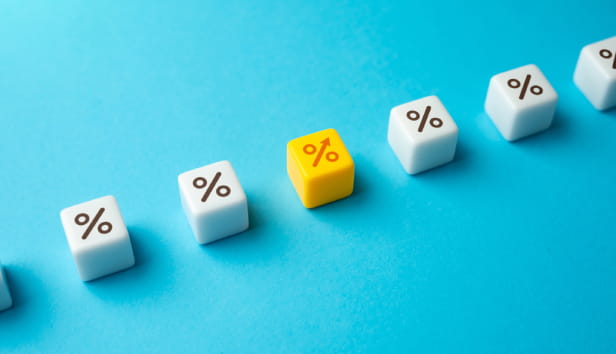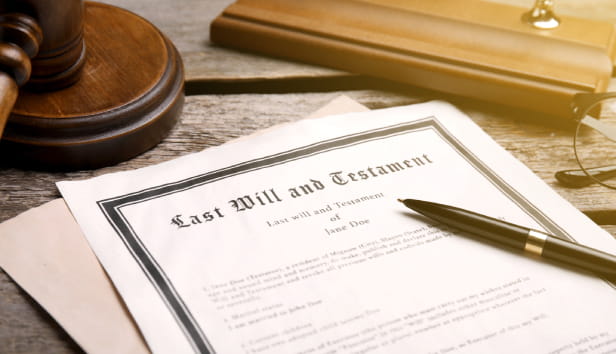
More people than ever are being dragged into the higher-rate tax bracket as a result of frozen tax thresholds.
As wages and pension incomes rise, millions more people are paying at least 40% tax on some of their income. But with some smart planning, there are perfectly legal ways to reduce your taxable income and keep more of your money.
The government estimates that nearly one in five income taxpayers in the UK (18.1%) will pay higher-rate income tax in the current tax year, 2025/26. That’s nearly 7.1 million people. That’s up 38.7% in three years, from 5.1 million higher-rate taxpayers in the 2022/23 tax year.
These increases are largely because income tax thresholds have been frozen since April 2021 and are expected to remain unchanged until at least 2028.
Tipping into a higher-rate tax bracket isn’t just about the 40% tax you pay on the amount over the threshold. It can influence other taxes and allowances too.
A higher tax band reduces your personal savings allowance (PSA) – the amount of savings interest you can earn tax-free each year.
Basic-rate taxpayers have an allowance of £1,000 before tax on savings interest is due. This is halved to £500 for higher-rate taxpayers, and additional-rate taxpayers receive no PSA at all, so all their savings interest is taxable.
Savings interest above the allowances is subject to income tax at your normal rate, whether that’s 20%, 40% or 45%. (Although income tax rates are different in Scotland, savings and dividend income are taxed at the same rate as the rest of the UK.)
Bear in mind that savings interest is added to your total income. So if you earn £50,000 a year and receive £1,000 in interest, this would take your total income to £51,000.
It would push you into the higher-rate tax band and your personal savings allowance would fall from £1,000 to £500. Interest above £500 would be taxed at 40%. Remember that savings in an ISA are free from tax.
If you move up a tax bracket, you’ll also pay a higher rate of tax on dividends once you’ve exceeded your tax-free dividend allowance of £500.
Basic-rate taxpayers pay dividend tax at 8.75% and higher-rate taxpayers pay dividend tax at 33.75%.
The same applies to capital gains tax, which is a tax paid when you sell an asset or investment and make a profit. Basic-rate taxpayers pay capital gains tax at 18% but higher and additional-rate taxpayers pay 24% capital gains tax.
In the current tax year, you can make gains of £3,000 before paying tax, down from £12,300 in 2022/23.
If you have young children, earning a higher income could see you lose your child benefit.
If your or your partner’s ‘adjusted net income’ exceeds £60,000, you’ll need to repay at least some of the benefit through a self-assessment tax return. It must be completely repaid if one has an ‘adjusted net income’ more than £80,000.
Although this isn’t the same as whether you’re a higher-rate taxpayer, the principles are the same. ‘Adjusted net income’ is your taxable income after the tax reliefs below – such as for pension contributions and charity donations – are applied. So following one or more of the steps below can increase the chances you’ll be eligible for child benefit.

If you’re worried you could be pushed into a higher tax bracket, there are steps you can take.
Increasing your pension contributions reduces your overall taxable income. This could keep you in a lower tax band.
Aaron Peake, personal finance expert at free credit score service CredAbility, explains that if you earn £55,000 and pay an extra £5,000 into your pension, your taxable income drops to £50,000, putting you back in the basic-rate bracket.
You can pay up to £60,000 into your pension this tax year and carry forward unused allowances from the previous three tax years. As well as lowering your tax bill right now, the money will help fund your future retirement.
You can also still pay into a pension if you’ve already retired, although only if you’re under 75.
Clare Moffat, pensions and tax expert at Royal London, points out that people who have already retired could reduce the amount they withdraw from a workplace or personal pension (assuming they are using income drawdown). It’s sensible to seek financial advice first.
If you’re still working and approaching state pension age, you could consider deferring your state pension as another way of lowering your income and avoiding a higher tax bracket. You can even defer the state pension if you’ve already started taking it.
But it’s important not to make any knee-jerk decisions, warns Moffat. “Delaying claiming your state pension increases your payments by 5.8% for each year you defer. But you’ll be giving up approximately £12,000 of income a year at current rates, assuming you are entitled to the full new state pension, so it will take some time to recoup that,” she says.
Using your ISA allowance will shield more of your savings interest and investment income from tax. You can spread your £20,000 annual allowance across a combination of both cash and stocks and shares ISAs. If you’re in a trusting relationship, and if your spouse isn’t using their full ISA allowance but you are, you could help to fill up their ISA too.
If you have any shares and funds outside an ISA, consider using the Bed and ISA process to reduce your tax liability. This allows investors to sell shares or funds and repurchase them within their chosen tax wrapper so that future returns are tax-free, explains Lucie Spencer, financial planning partner at UK wealth manager Evelyn Partners.
“Just remember to calculate your capital gain carefully before selling, so that you’re aware of any tax liability you will incur if you exceed the £3,000 CGT exemption. Once those shares are held within the ISA, any income derived from those investments is tax-free,” she adds.
If you’re married or in a civil partnership, transferring assets between you could be another way to reduce a tax burden. If your partner pays a lower rate of tax, you can transfer income-producing assets, such as savings and investments, into their name, without triggering a tax event.
“This allows the couple to make use of two sets of allowances, such as the dividend allowance or ISA allowance, so that more income-generating assets are held by whichever spouse is subject to lower rates of tax,” says Spencer.
Donating to charity doesn’t just feel rewarding – it can lower your tax bill too. Will Fenton of financial comparison site Sterling Savvy explains: “Gift Aid increases the value of donations by 25%, and higher-rate taxpayers can reclaim the difference between the higher rate and the basic rate of tax on the gross donation amount.”
This means a donation of £1,000 becomes £1,250 to the charity, and as a higher-rate taxpayer, you can claim back £250. More importantly, the donation also extends your basic-rate band by the gross donation amount (£1,250 in this case).
“This means that more of your income is taxed at 20% instead of 40%, potentially saving hundreds, or even thousands, depending on the scale of your giving,” says Fenton.
In some cases giving to charity could leave you better off – even though you have given money away. In particular, if your charity donation takes you from just above to just below the higher-rate tax band, and if this means you pay less tax on savings or investments as a result.
If you do a tax return, you can record your charity donations there. If you don’t, you can give HMRC a ring to let them know the total donations you’re making through they year. They should be able to adjust your tax code accordingly.
Or if you’re still working and your employer has a payroll giving scheme, you can make donations that way and they’ll be taken straight from your pre-tax salary. This also called ‘give as you earn’ and can be a tax-effective way of donating to charity.
If you’re still working, using a salary sacrifice scheme, if available, can be another effective way to reduce taxable income. Salary sacrifice means that the money is deducted before your salary is paid to you.
It only has tax advantages if used for pension contributions, electric car schemes or cycle-to-work schemes.
For confident investors, who are prepared to risk their capital, there are schemes designed to encourage investment in early-stage businesses. These offer tax reliefs designed to make it more attractive to take on the higher level of risk involved in new companies.
The enterprise investment scheme (EIS) and venture capital trusts (VCTs) are a form of investment in early-stage startup companies, to provide them with financing to help them grow.
With both schemes, 30% of the amount you invest can be claimed as a reduction on your income tax bill, as long as you keep the shares for the qualifying periods.
With the EIS, gains on successful companies are free of capital gains tax. With VCTs, dividends are tax-free.
They’re only suitable for investors comfortable with a high level of risk. If you’re interested, discuss it with a financial adviser to see if it might be suitable for you.
In England, Wales and Northern Ireland, income tax is charged at:
In Scotland, the higher-rate threshold starts at £43,663 (taxed at 42%), with an advanced rate of 45% between £75,001 and £125,140, and a top rate of 48% beyond that.
Tax planning is more important than ever as frozen thresholds and shrinking allowances push more people into higher tax bands.
Whether you’re still working, easing into retirement, or managing investments and pensions, taking the time to review your tax position could save you thousands each year.
If you’re unsure what to do next, it’s important to seek independent financial advice.


With our Stocks & Shares ISA and General Investment Accounts. Capital at risk.

Learn how to manage your pension pot to ensure you don’t run out of cash.





